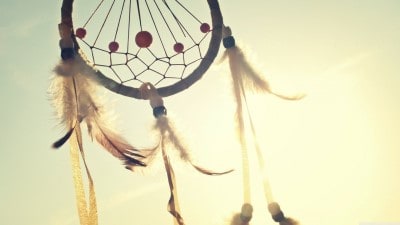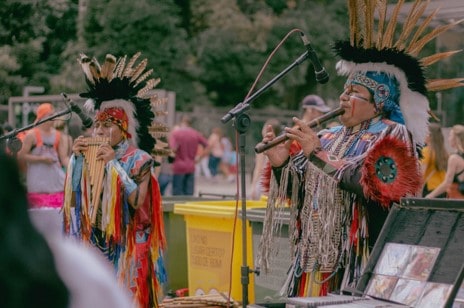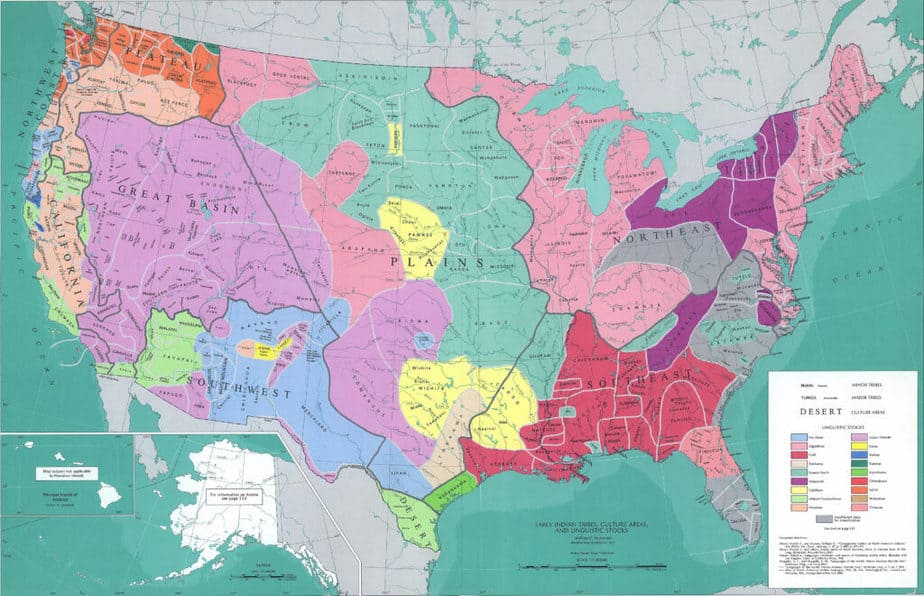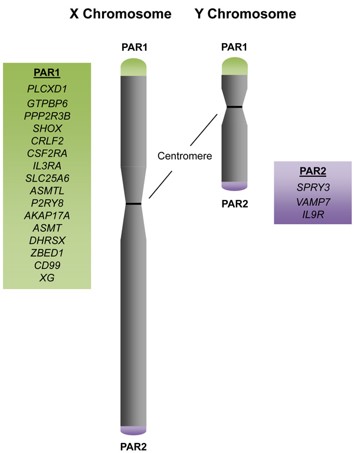Table of contents
As part of their gene tests, many people in North and South America take an ancestry Native American DNA test to find genetic connections with indigenous ancestry.
Although our scope is purely scientific, we cannot disengage from the cultural aspect of Native American genetics. Ancestry genetic testing is pretty young, and we are still learning a lot about it. As it evolves, so does the way we interpret the data we collect. This poses a challenge to the way we understand identity and its connection to DNA.
If you have ever wondered how to find out if you are of American Indian descent, perhaps your answer is in science, but there is also a lot more to it.
In this article about the Native American DNA test, we will help you have a clearer picture of the difference between DNA, identity, and ancestry. We will look at how accurate DNA testing is for genealogy, and we will explain why Nebula Genomics is one of the best DNA testing companies in the market. We decode 100% of DNA which enables deep ancestry based on Y chromosome and mitochondrial DNA that goes many generations back. This test will help trace Native American ancestry.

What does a Native American Ancestry DNA test tell you?
Can DNA testing determine Native American ancestry? When a company unlocks your DNA, they usually decode only a percentage of it. If you specifically order a Native American DNA test, you will be getting just that. On the other hand, Nebula Genomics decodes 100% of your DNA. You may be able to answer the question of “am I indigenous” as well as potentially any other question you have related to your ancestry, traits, and genetic predispositions.
A DNA test for Native American ancestry should be able to help guide you into searching for your roots. But there is one thing to be clear about: you must view your results cautiously in terms of current technology’s limitations.
It is possible to reasonably trust that some sections of your DNA come to a match with the DNA of some Indigenous American individuals. But, to this point, these tests can not be considered when deciding tribal membership.
Interpreting the results for Tribal or Nation Affiliation
Tribal membership and how people are accepted into a tribe is much older than modern DNA testing. You cannot use these results to demand or seek membership in a Tribe or Nation.
Tribe leaders do not validate these tests for affiliation. What specific tribes need for enrollment purposes is genealogical evidence of kinship. Tribe leaders consider that a simple ancestry DNA test kit cannot dictate a particular culture’s sense of belonging. One of the rare DNA tests that is accepted by most tribes is available through DNA Services Unlimited.
A genetic ancestry test with possible DNA matches to some Indigenous Americans does not mean that you should automatically identify yourself as a Native American. Ancestry testing cannot be used as evidence to “confirm” such ancestry.
What should you look for with a Native American DNA test?
There are several reasons why someone would use genetic testing to help determine whether they are or not Native American:
- Repatriation as a result of determining if some ancient remains are Native
- People who might think they are Native American and want to prove it
- Search for a sense of belonging to a tribe or nation
You will find in a DNA test for Native American ancestry your connection to the Indigenous Americas region. Any individual having at least one indigenous American ancestor has such origin. But not everyone having indigenous ancestry has indigenous DNA.

Ancestry tests, especially those that analyze the Y chromosome and mtDNA, are useful to understand where your relatives came from and how they migrated from around the world. These tests have a strong sentimental and recreational value more than they have scientific use. Whenever taking any of these tests, look for genetic markers to help tell your ancestors’ story to your descendants.
The samples with which most currently available DNA tests are compared are actually from small Native American tribes. Native Americans all descend from populations that expanded through Asia thousands of years ago. Today, each tribe has its own course, but most groups still have the same genetic material. This means that a DNA test will not be able to reveal what tribal group you belong to specifically.
You should test your relatives too
As stated above, it is possible not to have indigenous DNA and have Native American ancestors. This is because 50% of your genes come from each parent. During the passing of genes, there is a possibility that the DNA from a given ancestor got lost.
Every child receives 50% of genetic information from each parent. But this does not mean that they pass along 50% of their ethnicity. If your father, for instance, is half German and half indigenous American, he may pass on to you more German DNA. As generations pass by, the randomness of inheritance might make the ethnic genes too few to be perceptible by DNA tests or lost entirely.
If you know that you have indigenous American ancestors, but your Native American test seems to say otherwise, you could have your relatives tested. The DNA results of your parent, grandparent, or even sibling might help you confirm that there is ethnic DNA in your family.
As you can see, the further behind your tested relative is, the more likely their DNA is to contain indigenous ethnicity. If close ancestors are not available, you can test your siblings. They may have received more of an ethnicity that you did not.
Why a DNA test is not definitive of your tribal ancestry
Let us first establish that a Native American DNA test does not provide legal proof of indigenous ancestry.
Undoubtedly, these tests will help you trace your ancestry many years back. But do not make the mistake of automatically assuming citizenship only because a DNA test tells you you had ancestors from that particular region.

Having French ancestry does not make you a French citizen. Likewise, if we were to find that you share some genes with Native Americans, this does not mean that you are automatically enrolled into a tribe. We already mentioned how a DNA test cannot get anywhere close to determining specific tribal ancestry.
A person’s DNA does not determine tribal identity (an essential aspect, actually) or membership. A sovereign tribal council will decide if your participation and contribution to a tribe are significant enough. They will not likely ask you to bring in your DNA test results.
Experts and Native Americans have shown concern for people claiming tribal heritage from genetic testing. Especially since some might use it for benefits such as minority scholarships or simply to find a group to identify with. It was genetic testing that led Sen. Elizabeth Warren to claim Indian ancestry and, according to her opponents, use it to leverage her campaign for candidacy to the 2020 elections.
But being a Native American is about sharing values, traditions, craft, skills, and the commitment to pass on this cultural heritage. A DNA test is rarely involved. Tribal members consider that using a DNA test is not synonymous with Native American heritage.
Criteria for enrollment in Indigenous North American Nation of Federally Recognized Tribes
As you can see now, biology will not determine if you belong to a determined group. So the question is not what tribe am I from, but whether I qualify to become a member or not.
These are the estimates considered when questioning whether or not a person can belong to a tribe or nation:
Documented genealogy
A genealogy that includes as many of your ancestors as possible, their origins, and a connection with an indigenous community is useful.
Community connection
There are many people out there who, despite having Indigenous ancestry, they have no cultural connection with them.
Indigenous Americans have a long history of suffering, slaughter, and cultural assimilation. Take, for example, Native American boarding schools, which opened with the primary purpose of assimilating Native American children into the ways of Western culture.
Many Natives still have fresh wounds from a time that tried to wipe out their heritage and identity.
Cultural affiliation
Cultural affiliation refers to tracing a shared group identity historically with a current Indian group. This helps the council better assess if there is a close connection between indigenous roots.
Residence
The residence has long been used to delimit a population, and it will help establish if you have had the chance to interact with a Native tribe.
Language
During history in the late 19th and early 20th centuries, one purpose of cultural assimilation was to eliminate the language. Children in boarding schools were not allowed to speak it. These prohibitions actually triggered a sense of belonging and cultural pride, helping preserve their Native language to this day.
What are Native American DNA markers?
Does Native American show up in DNA test? When a person takes a DNA test, their genes are compared to what is known as Native American DNA markers. These are genetic markers that are commonly found in indigenous individuals.
Many companies claim to have a database large enough of Native Americans to validate ethnicity. But what is the science behind this?
Which DNA test shows Native American ancestry? These markers are principally analyzed in two locations, the mitochondrial DNA (mtDNA) and the Y chromosome (Y-DNA).

You should note that since the Y chromosome is only passed from father to son, this test can only be taken by males. If you are a female and want to know if you have any of these markers, you can have a close male relative take the test.
This test will only trace the Y-chromosome line of inheritance, which misses some of the individual’s ancestry. In other words, if a person had a long line of Native Americans, but their great-great-grandfather was not Indian, this person will show up as non-Indian in this test.
Mitochondrial DNA is only passed on by the mother to their children (male or female). This means that this line of biological inheritance stops with every male. If there is any marker to be found in an mtDNA test, it will be searched for in a continuous line of great grandmothers and mothers. This means that if a generation in your ancestors had only males, or this descent comes from your father, we will not find Native American ancestry in your test even if there were one in your lineage.
The best DNA test for Native American ancestry
Both of these tests can be as accurate as they can get but still not find those markers on your DNA, which is why it is a good idea to have your relatives and close ancestors test themselves too.
To this, you must add that even the best DNA testing companies do not trace the entirety of your genomes, but only a section. On the other hand, Nebula Genomics decodes 100% of your DNA, enabling deep ancestry based on Y-chromosome and mitochondrial DNA. Our tests go many generations back to trace these markers, giving you a much greater success chance.
Conclusion
In the purely scientific sense, to define indigenous ancestry, you need to take a test that targets the markers we have identified as belonging to Native Americans. However, these so-called markers are also found in other populations around the world, although not in the same amount as in Native American people.
So, you have taken your DNA test with us, and we delivered your results. What to do about it now? Remember the important points:
- The results will only detail if you have Native American ancestry but will in no way establish what tribe your ancestors were from
- Your results are not a legal document that enables you to claim ancestry, and neither does it automatically grant you minorities benefits. Tribal Councils will probably not require it to determine enrollment.
- As we have learned, being Native American is about culture, identity, and traditions. A DNA test should not undermine these substantial sociological and historical aspects of indigenous ancestry.
Check out how we apply and treat information collected from our 30x Whole-Genome Sequencing and how we help you learn more about your family history via family tree.
Interested in learning more about your ancestry? You could also check out our reviews of these other ancestry DNA tests:
- 23andMe ($99 for basic ancestry test)
- African Ancestry ($299 per lineage)
- AncestryDNA ($99 for ancestry test)
- CRI Genetics ($99 for ancestry test)
- DNA Land (free DNA upload for trait and ancestry analysis)
- DNA Painter (first profile is free and subscriptions are available for others)
- GedMatch Genesis (free DNA upload for genetic genealogy and paid advanced options)
- Living DNA (starting at $49)
- MyHeritage ($99 for ancestry test, additional subscriptions for access to genealogy tools)
- WeGene (for Asian ancestry)
If you want to focus on your maternal and/or paternal lineages, you can look at YFull or YSeq, services which analyze mtDNA or the Y chromosome to determine specific lineage haplotypes. Full Genomes also offers Y chromosome sequencing and analysis and other tests are specific to certain groups such as those of African heritage.
